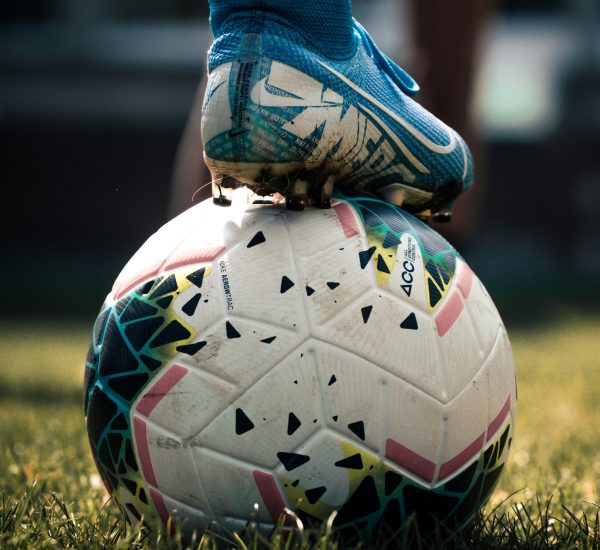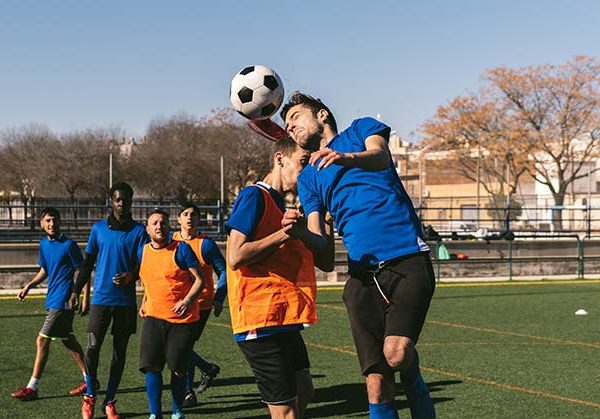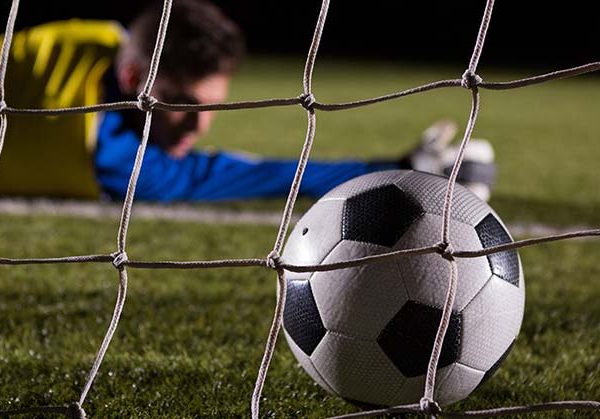Soccer is a sport that is enjoyed by people all over the world. There are many different positions in Soccer, and each position has its own unique set of responsibilities.
There are 11 soccer positions, and each position is attributed to a player on the field who has a specific role. For example, there are ten outfield players and one goalkeeper occupying each position on the soccer field.
In this article, we will take a look at each of the different soccer positions, and we will discuss the responsibilities of each position.
Soccer Game Overview
Soccer is a sport that anyone can play, regardless of their size or skill level. The game is typically played on a large field with two teams of 11 players. The game is divided into two halves, each lasting 45 minutes.
There are 11 players on the field for each team at any given time, one of which is the goalkeeper. The other ten players are divided into three groups: defenders, midfielders, and forwards.
The soccer team scoring the most goals wins the match. The game is a draw if the score is the same.
Soccer Positions and Numbers
There are different soccer positions, and each position has a specific role on the field.
The goalkeeper is the last line of defense and is responsible for preventing the other team from scoring.
The defenders are responsible for blocking shots and preventing the other team from passing through to the goal.
The midfielders help control the ball and create chances for their team to score. And finally, the strikers are responsible for putting the ball in the back of the net.
Each position also has a specific number assigned to it. For example, below is the number assigned to each position in soccer.
- Goalkeeper
- Right Full-back
- Left Full-back
- Center-back
- Sweeper
- Defensive Midfielder
- Right Midfielder (or Winger)
- Center Midfielder
- Center Forward (or Striker)
- Attacking Midfielder (or Center Forward)
- Left Midfielder (or Winger)
Soccer Positions and their Roles
Soccer is a sport that many people enjoy watching and playing. However, it is a physical and demanding sport that can take years to master. There are many different positions in soccer, each with its own unique set of responsibilities. Some of the most common soccer positions include goalkeeper, defender, midfielder, and striker.
- Goalkeeper: The goalkeeper is responsible for defending the team’s goal by stopping shots from entering the net. They also play a crucial role in organizing the defense and directing their teammates.
- Defender: The defenders help keep the opposing team from scoring by blocking shots and tackling players who have the ball. They must be strong and quick to cover as much ground as possible.
- Midfielder: Midfielders are responsible for both attacking and defending.
- Striker: The role of the striker is to score goals.
Goalkeeper Position
A goalkeeper, also known as a goalie, is a playing position in association football. It is the most critical position on the pitch after the center-backs.
They are responsible for protecting the goal and preventing the other team from scoring. Therefore, a good goalkeeper can make a huge difference in a game.
Goalkeepers need to make saves and have good judgment when leaving their net to challenge an opponent.
They are also responsible for organizing the defense by communicating with their teammates and organizing their players. Goalkeepers usually wear special gloves and clothing to distinguish themselves from other players.
Full-backs Position
Full-backs have always been an essential part of soccer, and their role has only grown more critical in recent years. As the game has become faster and more competitive, teams rely on their full-backs to provide width and support on both offense and defense.
The full-backs are typically responsible for attacking down the flank and providing defensive support by tracking back when necessary. In addition, they are often called upon to make crosses into the penalty area and take shots on goal.
To be successful as a full-back player, one must be able to run long distances, possess good stamina, and have strong tackling skills.
Center-back Position
The center-back in soccer is a vital position. Center-back players are responsible for keeping the opposing strikers from scoring and helping to build up the offense.
They also need to be excellent defenders and mark their opponents tightly. A good center-back can help his team win games. Center-backs need to be solid defenders and have exceptional ball control abilities.
Center-backs need to read the game well and make quick decisions.
Sweeper Position
The sweeper position in soccer is a unique one. It is the only position where the player has no specific man to mark. Instead, the sweeper’s job is to patrol the entire backline and help out whichever defender needs it. As a result, the sweeper must be very quick and agile and have a good understanding of the game.
The role of the sweeper has changed over time. Initially, it was a defensive position that was used to clear balls from in front of the goal. However, with the rise of more attacking-minded teams, the sweeper is now often used as an additional defender to help prevent goals. It can mean playing further up the field or even joining in on attacks.
Despite its change in role, the importance of the sweeper has not diminished.
Defensive Midfielder Position
A defensive midfielder, also known as a holding midfielder or a deep-lying playmaker, is a midfield player who specializes in protecting their team’s goal.
Their primary role is to stop the opposing team from attacking and win back the ball if it is lost. In addition, they are often called upon to make long tackles or clearances to stop the other team from scoring.
Defensive midfielders also need good passing and dribbling skills to start attacks for their team.
Winger Position
Wingers are a crucial part of any soccer team. They are responsible for providing width on the pitch and creating chances for their teammates. Wingers need to be good dribblers and have good crossing ability. They also need to be good at tracking back and defending their own goal.
Besides, wingers also need to be good at shooting, as they may be called upon to take shots from a distance.
Center Midfielder Position
The center midfielder in soccer is a vital position. They are responsible for helping to control the midfield and dictating the game’s tempo.
These players need to be good passers and have a solid defensive work ethic. They also need to be able to score goals, as they often play in the attacking third of the field.
Some of the best center midfielders in the world include Andres Iniesta, Luka Modric, and Paul Pogba.
Center Forward Position
The role of the center forward in soccer is to score goals. It may seem like a simple task, but it is pretty tricky. The center forward must be able to beat defenders and score in various ways.
He also needs to be solid and good with the ball at his feet. Most importantly, the center forward must be able to make runs into the box and get on the end of crosses.
The center forward is also responsible for creating chances for their teammates to score. Therefore, they need to be able to hold up the ball and make good decisions with it.
Attacking Midfielder Position
In soccer, the attacking midfielder is a crucial position. This player is responsible for creating chances for teammates to score and putting the defense under pressure. Therefore, they need to be able to play both short and long passes and be able to shoot accurately.
The best-attacking midfielders have good dribbling skills, as they often need to take on defenders in one-on-one situations. Furthermore, they also need to be good at reading the game to make the right decisions when attacking.
An excellent attacking midfielder can be the difference between a team winning or losing a game.
Soccer Formations
A formation in soccer is the positioning of players on the pitch. The most common formations are 4-4-2, 3-5-2, and 4-3-3. For example, in a 4-4-2 formation, there are four defenders, four midfielders, and two forwards. The three most common defensive formations are the 4-4-2, 3-5-2, and 5-3-2. The most common attacking formation is the 4-3-3.
The 4-4-2 Formation
The 4-4-2 formation is a prevalent system in soccer. It is a formation that relies on balance and organization, both defensively and offensively. The midfield is vital in this formation, as it helps to control the game and create chances for the forwards. In addition, the 4-4-2 can be used in both attack and defense, making it a versatile formation.
Read everything about the 4-4-2 formation in this blog post.
The 3-5-2 Formation
The 3-5-2 formation is a very versatile formation that can be used in different ways to attack and defend. When used in an attacking sense, the three forwards can create chances for one another while the two midfielders support them. In a defensive mind, the three defenders can hold off any attacks while the midfielders help to protect the goal.
The 4-3-3 Formation
The 4-3-3 formation is one of the most famous formations in soccer. It is a versatile formation that can be used in both attack and defense. The four defenders line up in a straight line, while the three midfielders split up, with one in the middle and the other two on the wings.
This formation allows for a lot of creativity and movement on the field, as players can move around to create space and take advantage of weaknesses in the defense.
The 5-3-2 Formation
The 5-3-2 formation is a defensive formation in soccer that has gained popularity in recent years. It is a more conservative formation that can protect a lead or stifle the opposing team’s attack.
As a result, the 5-3-2 formation consists of five defenders, three midfielders, and two forwards. This formation is most effective when used by a team with solid defenders and midfielders who can control the game and keep the ball away from the opposition’s forwards.
Choosing the Best Soccer Position
Soccer is a sport that many people enjoy, but not everyone knows what position is best for them. Positions in soccer are goalkeeper, defender, midfielder, and forward.
First, you have to ask yourself what you are good at. Are you good at scoring goals? Do you like to run around and get physical with the other players? If so, then you might be a forward.
Are you more of a strategic thinker? Do you like to have the ball at your feet and control the game? If so, then you might be a midfielder.
There are many different soccer positions, and it can be challenging to determine which one is best for you. However, you can consider a few things to help make the decision. For example, think about your strengths as a player and what you enjoy doing on the field.
Another thing to keep in mind is the team’s needs. If the team already has several players playing a specific position, it might be harder for you to break into the lineup and play there. You might be better off playing a different role or trying out for another team.
Finally, talk to your coach or other experienced players about which position would be best for you. They can give you some good advice and help point you in the right direction.
How to Become Good in your Soccer Position
There is no one specific way to become good at your soccer position. However, a few things will help you improve your skills and become a better player.
First, make sure you are regularly practicing. It means setting aside time each day or week to work on your skills, whether taking shots on goal, dribbling through cones, or passing the ball with a partner.
Second, focus on the fundamentals. Soccer is a complex sport, and there are many different aspects to becoming a good player. However, if you can master the basics – like controlling the ball, passing accurately, and shooting accurately – you will be well on your way to improving your skills.
Finally, try to watch as many soccer games as you can. It will help you learn new skills that will only benefit you as a soccer player.
End of Line
In conclusion, it is evident that there are many different soccer positions, and each position has its own unique set of responsibilities.
Players need to know the responsibilities of their position to be successful on the field.
As a coach, it is crucial to understand the different soccer positions and what they entail to put together a team that can be successful.
Finally, as a fan of the game, it is essential to know the different positions to understand the game better.



